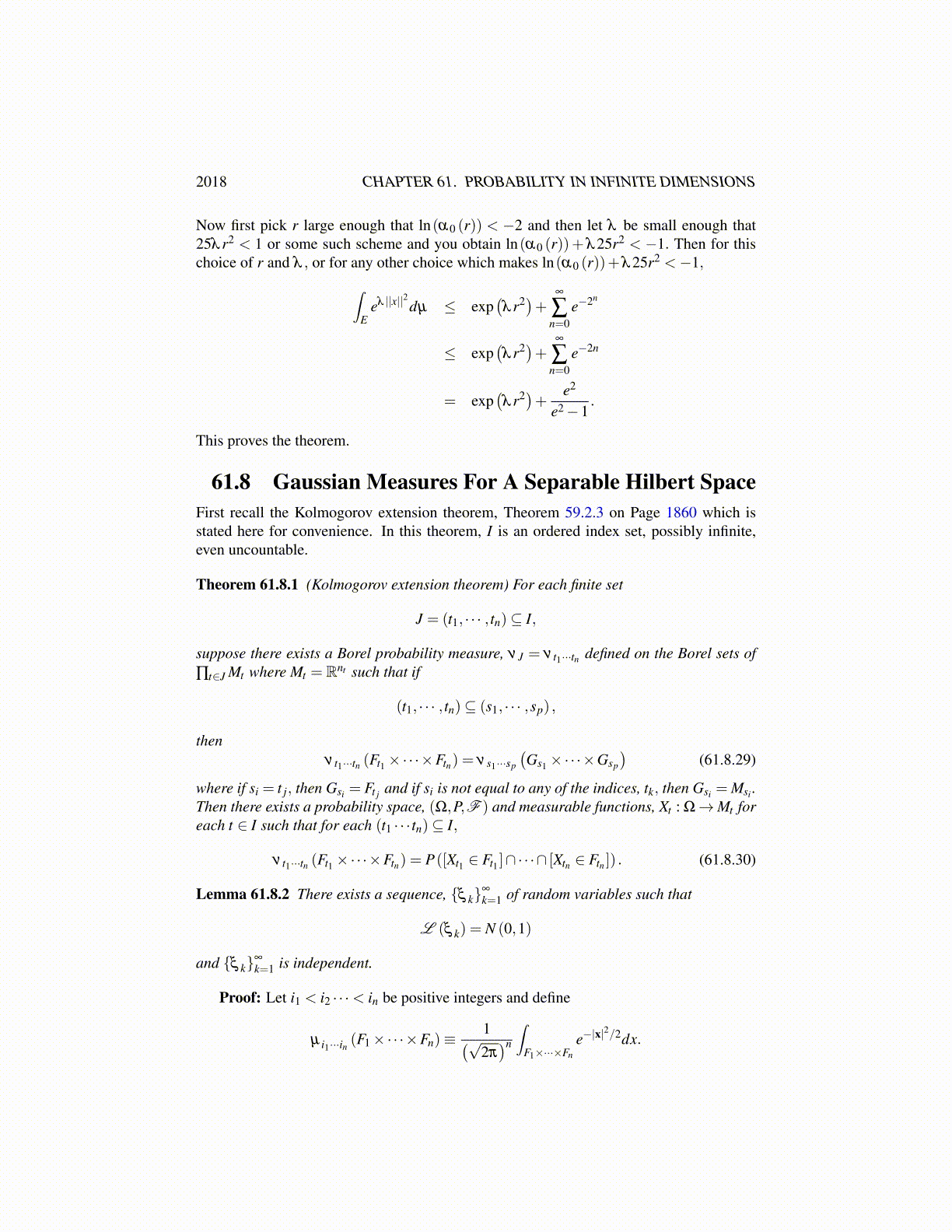
2018 CHAPTER 61. PROBABILITY IN INFINITE DIMENSIONS
Now consider the following picture in which R represents the points, (||X || , ||Y ||) such that
1√2|||X ||− ||Y ||| ≤ s and
1√2(||X ||+ ||Y ||)> t.
(?, t−s√2)
( t−s√2,?)
R
Therefore, continuing with the chain of inequalities above,
P(||X || ≤ s)P(||Y ||> t)
≤ P(||X ||> t− s√
2, ||Y ||> t− s√
2
)= P
(||X ||> t− s√
2
)2
.
Since X ,Y have the same law, this can be written as
P(||X ||> t)≤P(||X ||> t−s√
2
)2
P(||X || ≤ s).
Now define a sequence as follows. t0 ≡ r > 0 and tn+1 ≡ r +√
2tn. Also, in the aboveinequality, let s≡ r and then it follows
P(||X ||> tn+1) ≤P(||X ||> tn+1−r√
2
)2
P(||X || ≤ r)
=P(||X ||> tn)
2
P(||X || ≤ r).
Let
αn (r)≡P(||X ||> tn)P(||X || ≤ r)
.
Then it follows
αn+1 (r)≤ αn (r)2 , α0 (r) =
P(||X ||> r)P(||X || ≤ r)
.